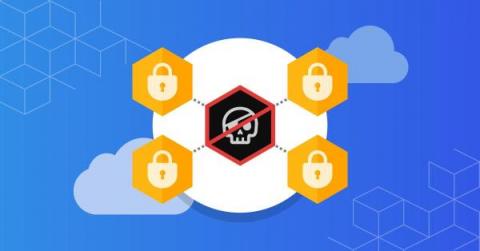Security | Threat Detection | Cyberattacks | DevSecOps | Compliance
Zero Trust
CrowdStrike and Cloudflare Expand Zero Trust from Devices and Identities to Applications
Threat actors continue to exploit users, devices and applications, especially as more of them exist outside of the traditional corporate perimeter. With employees consistently working remotely, adversaries are taking advantage of distributed workforces and the poor visibility and control that legacy security tools provide.
Unpacking OMB's federal strategy for implementing Zero Trust
The US Office of Management and Budget (OMB) has released a strategy to help the federal government embrace a zero-trust approach to cybersecurity.
Cloud Security Alliance Teams with CrowdStrike, Okta, and Zscaler to Create Focal Point for Zero Trust Education and Best Practices
Zero-trust for cloud-native workloads
There has been a huge uptick in microservices adoption in the data analytics domain, primarily aided by machine learning (ML) and artificial intelligence (AI) projects. Some of the reasons why containers are popular among ML developers is the ease of portability, scalability, and quick access to data using services—specifically network services. The rise of cloud-native applications, especially for big data in the analytics sector, makes these applications a prime target for cyber crime.
CrowdStrike and Cloud Security Alliance Collaborate to Enable Pervasive Zero Trust
The security problems that plague organizations today actually haven’t changed much in 30 years. Weak and shared passwords, misconfigurations and vulnerabilities are problems that have tormented the industry for years and persist to this day. What’s changed is the speed and sophistication at which today’s adversary can weaponize these weaknesses.
Introducing Zero Trust Data Security
How Security Service Edge (SSE) Can Help Federal, State, and Local Government Security Leaders in Their Zero Trust Journey
The federal government continues to make progress towards Zero Trust (ZT) adoption. On May 12, 2021, President Biden signed Executive Order 14028 to improve the nation’s cybersecurity and protect federal government networks and on January 26, 2022, the Office of Management and Budget (OMB) released a Federal strategy to move the U.S. Government toward a Zero Trust approach to cybersecurity.
Enabling Zero Trust for Your Mobile Devices
How to secure microservices in a Zero-Trust environment
Microservices architecture is a convenient way to silo different software services compared to traditional software architecture and design. However, with multiple microservices communicating amongst each other - the attack surface of the network is greatly increased. The security of such a system depends on the security of all the services. Any deviation in the system’s security ultimately undermines the integrity of the entire network.









